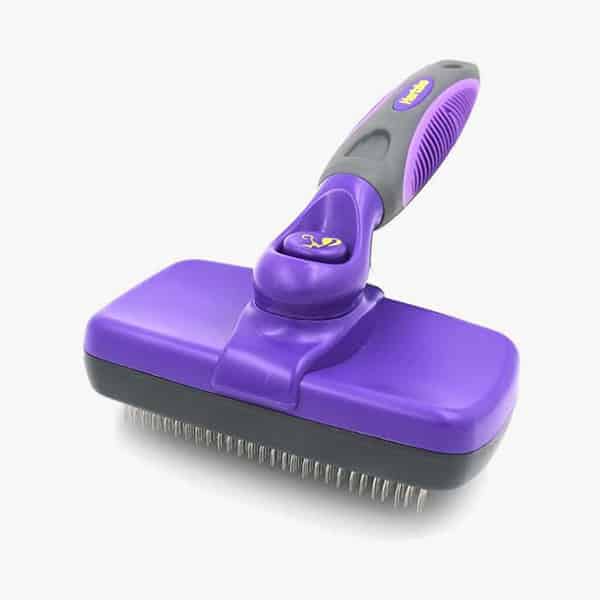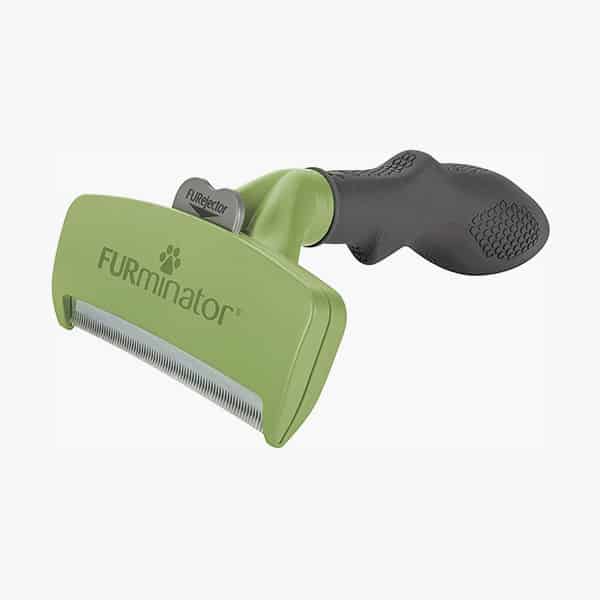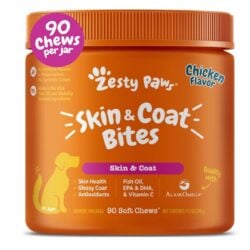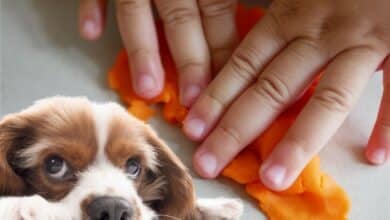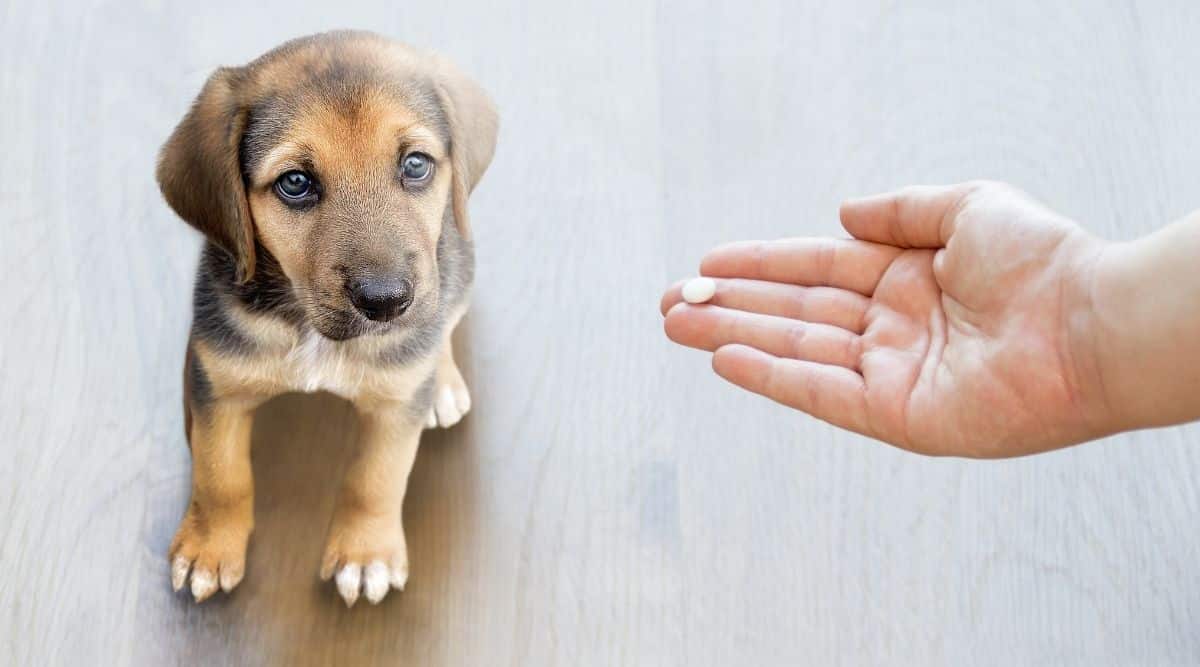Do Labs Shed? Labrador Shedding Secrets Every Owner Needs To Know
When you purchase through links on our site, we may earn a commission. Here’s how it works.
Do Labs shed? Oh, only constantly. If you’ve got a Labrador, you’ve got fur on your floors, clothes, pillows, and coffee. Your dog’s adorable, sure, but they’re also a full-time fluff dispenser with no off switch.
Table of Contents
And if it feels like your house is slowly turning into one giant dog-hair tumbleweed… you’re not alone.
This guide breaks down why Labs shed like it’s their job and what you can actually do about it (besides vacuuming for the third time today).
From smart grooming tricks to sanity-saving products, I’ve rounded up the stuff that actually helps you cope with the chaos.
Do Labs Shed More Than Other Dogs?
Short answer: Yes. Long answer: Yes, and it’s not even close.
Labrador Retrievers are armed with what’s called a double coat. A soft, dense undercoat for insulation and a tougher outer coat that repels water. Translation? They shed like they’re being paid for it.
They don’t shed because something’s wrong. They shed because that’s how they’re built. But that doesn’t mean you’re powerless. (More on that soon.)
Labradors shed more than most double-coated dogs because their undercoat is basically a thick, built-in sweater they’re constantly trying to return. And unlike some dogs that just shed seasonally, Labs keep the fur party going year-round.
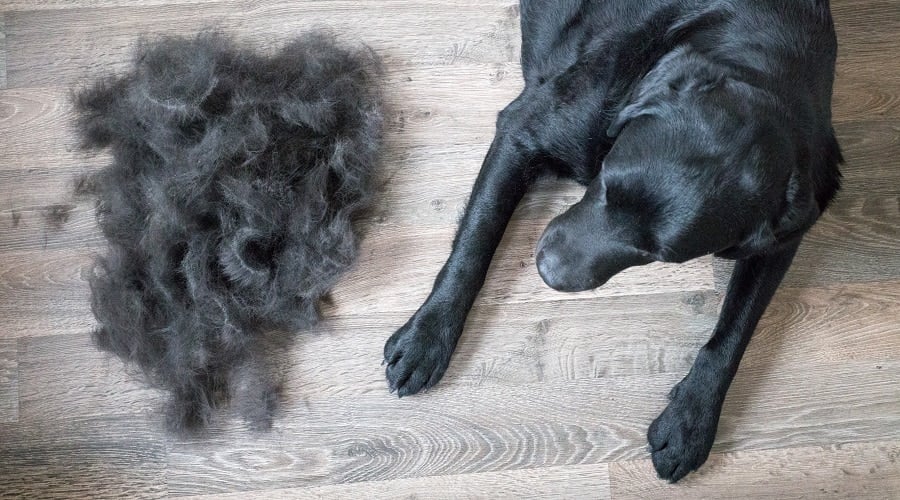
Compared to many breeds, Labs are in the heavyweight shedding division, right up there with Huskies and German Shepherds. But hey, at least they don’t shed like a Newfoundland or Malamute, aka walking fur factories with legs.
When Labs Shed The Most
Have you ever brushed your Lab and come away with enough hair to build a second dog? Welcome to shedding season, a.k.a. Labrador owners’ personal hell.
Labs shed year-round, but they go full supernova twice a year: spring and fall. That’s when their double coat “blows out” to prep for the changing weather. In spring, they drop their thick winter fluff. In fall, they dump their breezy summer coat to bulk up for colder months.
During these weeks, brushing once a day isn’t overkill. It’s survival. You’ll see fur clumps on the floor, in corners, and even floating through the air like it’s snowing dog.
Do Labs Ever Stop Shedding?
Short answer: Nope. Long answer: Also nope, but it gets easier.
Labradors are born to shed. It’s in their DNA, right next to “love snacks” and “sit on your foot for no reason.” While you can reduce the amount of hair floating through your house, you’ll never stop it completely because it’s not a problem. It’s normal.
What does get better? Your strategy.
With the right routine, including brushing, nutrition, and the occasional shampoo that doesn’t smell like sadness, you’ll notice less hair, less stress, and fewer moments of “Is that a new dog under the couch?”
So no, Labs don’t stop shedding. But with a bit of help, you might stop noticing.
Coming up soon: the brushes, shampoos, and sneaky tools that actually help you fight the fur (without losing your mind).
Black, Yellow, & Chocolate Labs: Who Sheds The Most?
You’ve seen the fur. But does your Lab’s color make a difference in how much they shed? Technically? No.
Labrador Retrievers come in three primary color combinations. These colors are yellow, chocolate, and black. There are also rarer Red Labradors and Silver Labradors (but these are not accepted show colors.)

All Labs, black, yellow, and chocolate, have the same double coat and the same mission to cover your house in hair.
But there’s a visual twist that tricks your brain: darker fur shows up more on light furniture, while lighter fur sticks out on dark clothes. So it can feel like certain colors shed more.
That said, some Lab owners swear their yellow Labs are fluff factories, while others blame their chocolate-coated chaos monsters. It’s not the color. It’s the individual dog, the season, and how often you’re brushing (or not brushing… I’m not judging).
Even the English and American Labradors, who are the same breed, shed the same.
So, pick your fighter because they all shed. A lot. Black Lab? Congrats, your white shirt now has a fur tuxedo. Yellow Lab? That navy couch just became a speckled crime scene.
5 Reasons Your Lab Is Shedding More Than Usual
Sure, Labs are natural shedders, but if it feels like your house is turning into a fur blizzard daily, there could be more going on. Here are five sneaky reasons your Lab might be dropping extra fluff.
1. Low-Quality Dog Food
If your dog’s diet lacks omega-3s and proper nutrients, their coat suffers and sheds. Think of it as junk food for their fur.
Look for foods with salmon, flaxseed, or fish oil listed early in the ingredients.
2. Too Much Or Too Little Bathing
Overbathing strips natural oils; not bathing enough lets dead hair pile up.
Use a gentle formula or a de-shedding shampoo once a month, not your own herbal lavender body wash.
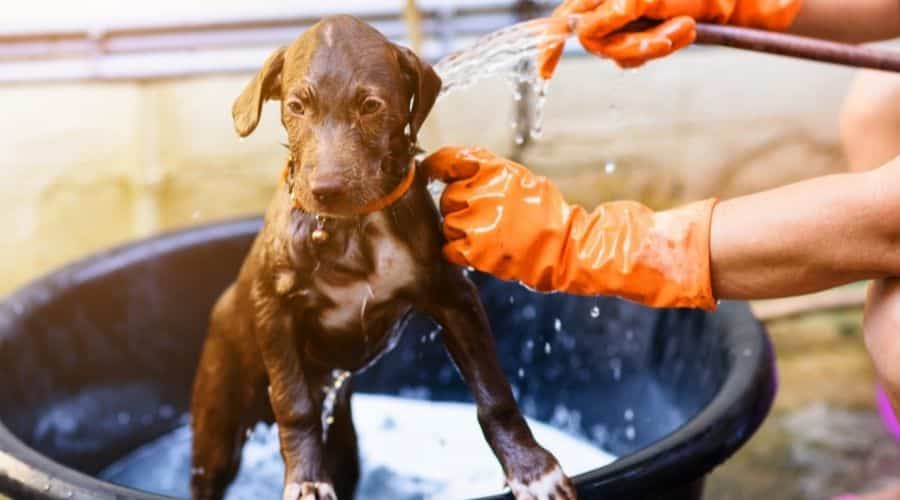
3. Allergies Or Fleas
If your Lab’s shedding looks patchy or they’re scratching constantly, something’s up. Allergies, fleas, or skin infections can crank up the fur fallout.
Red Flag: Bald or sore spots = vet time.
4. Dry Air Indoors
Heating systems can dry out your dog’s skin, especially in winter.
5. Stress Or Anxiety
New baby? Moved homes? Thunderstorm? Stress causes extra shedding. Dogs shed more when they’re emotionally overwhelmed, just like us (but with less crying and more couch hair). Investing in interactive dog toys and tough chews for your Lab can reduce anxious energy.
Managing Your Lab’s Shedding
You can’t stop your Lab from shedding, but you can win a few battles in the Fur War. These tools? Legit game-changers. I’m not talking gimmicks; you’ll actually want these in your grooming arsenal.
But remember, if you notice a change in your Lab’s normal shedding, you should check with your veterinarian before starting any self-diagnosed treatment.
1. Brushing
Regular brushing isn’t optional. It’s essential.
And it’s not just the brush. It’s the whole routine. When you tackle shedding from all angles, it becomes way more manageable (and way less furry).
But remember, not all brushes are created equal. Here’s what actually works for Labs and what you need.

Year Round Brush
Brushing your Lab once or twice a week is good, but every two days is even better. The more consistent you are, the less fur ends up blanketing your floors, clothes, and car seats. Getting your dog comfortable with regular brushing (especially outside) makes a huge difference.
A quality slicker brush like the Hertzko slicker brush is one of the must-have tools for Labrador owners for everyday maintenance. It doesn’t pull as much fur as a de-shedder but keeps the topcoat tidy and shiny. It helps manage everyday shedding and keeps that double coat healthy between deep grooming sessions.
Deshedding Tool
Deshedding brushes are a Labrador owner’s secret weapon, especially during shedding season. When your Lab “blows” their coat in spring and fall, these tools go beyond surface brushing to pull loose fur from both the topcoat and the dense undercoat, where most of the mess hides.
They’re easy to use, budget-friendly, and way more effective than a standard brush when your house starts looking like a fur storm hit. I recommended the FURminator de-shedding tool for great results every time.
We have a detailed guide on the best de-shedding brushes for more shedding secrets and other top products.
Grooming Gloves
Grooming gloves are perfect for brushing down your Lab throughout the day or after walkies. Plus, they’re helpful for Labs who squirm, wiggle, or act personally offended by real brushes. Grooming mitts, like the Delomo grooming gloves, let you “pet the shed away.”
In-Depth Review For The Best Labrador Brushes
For a deeper dive, check out our in-depth review guide on the best brushes for Labs. We break down exactly which tools work best for tackling that thick double coat and keeping the fur fallout under control.
2. Shampoos
Labradors can have sensitive skin, so choosing the right shampoo matters. Many of the following shampoos can reduce shedding over time. Plus, they make your Lab smell less like… your Lab.
A gentle oatmeal formula is a great place to start. It cleans without stripping the natural oils that keep your Lab’s coat healthy.
If regular oatmeal shampoo isn’t cutting it during heavy shedding, try a deshedding-specific formula. These are made to reduce loose fur and soothe irritated skin.
For Labs with skin issues or allergies, look for calming or medicated shampoos that target the root causes of excess shedding.
Stick to bathing about once a month to avoid drying out their skin. We have a guide on how often you should bathe your dog for more guidance on this.
3. Diet
A healthy coat starts in the bowl and shows up in their coat. Low-quality food = dry skin and more shedding.
Labradors need a well-balanced diet, ideally one formulated for large, active breeds and rich in omega fatty acids. These nutrients support skin health, reduce inflammation, and help keep your Lab’s coat shiny, smooth, and less prone to excessive shedding.
For an extra boost, try mixing in dog-safe veggies and dog-safe fruits like zucchini, cooked sweet potatoes, and blueberries every now and then. They’re packed with natural vitamins and minerals that promote coat health, and your pup will love the variety.
In-Depth Lab Food Guide
For more on what to feed your Lab, check out our in-depth guide on the best food For Labradors. It covers the best formulas, ingredients to look for, and tips to support a healthy Lab coat from the inside out.
4. Supplements
Supplements are an easy way to boost your Lab’s coat health and reduce shedding, especially if their food lacks omega fatty acids.
Fish oil is one of the most effective options and comes in liquid, capsule, or chewable form. It supports healthy skin, reduces inflammation, and can help cut down on excess shedding.
I’m also a big fan of chewable coat supplements, like Zesty Paw’s skin and coat bites. They’re tasty, easy to use for training, and often packed with omega-3s, biotin, and other nutrients that promote a shiny, healthy coat.
They’re also good for joints, brain health, and heart function. So everyone, and everything, is a winner. Just remember to consult your vet before adding a supplement to your pup’s diet.
4 Ways To Keep Your Home Clean
Even with all the brushing, bathing, and supplements, some fur is still going to win the battle. That’s where your home setup comes in.
On top of using pet-safe cleaning products, these tools and tricks can help you stay ahead of the fluff and maybe even feel like you’re winning.
1. Robot Vacuum
A robot vacuum won’t stop the shedding, but it will stop you from vacuuming every day like a maniac. Set it, forget it, and watch it collect your Lab’s latest “donation.”
I recommend the Shark IQ Robot Self-Empty XL. This self-cleaning robot vacuum maps your home so you can send it straight to trouble spots (like the fur zone under the couch). It also works with Alexa.
Set “no-go zones” around your dog’s food and water bowls to keep things peaceful. The brush roll is designed to handle pet hair without getting tangled. And the self-emptying base holds up to 45 days of fur, dirt, and whatever else your Lab leaves behind.
Check out our guide on the best robot vacuums for pet hair.
2. Vacuum
Try a powerful corded upright if a robot vacuum isn’t cutting it. They’re great for deep cleans and stubborn fur and don’t run out of battery mid-shed.
Bissell’s 2998 MultiClean Allergen Lift-Off Pet Vacuum is a great pick for pet owners battling fur. The Lift-Off canister makes it easy to clean stairs and furniture, and the tangle-free brush roll handles pet hair without clogging.
It also has a HEPA-sealed system that traps 99.97% of allergens. This is a highly-rated, budget-friendly vacuum designed with shedding pets in mind.
We have also researched the best vacuums for pet hair with more options and advice on keeping your home as fur-free as possible.
3. Air Purifier
As Labradors are constant shedders, dander, dust, and allergens stay airborne long after the fur settles. An air purifier traps these microscopic particles, reducing sneezing and allergy flare-ups. Plus, it also cuts down on pet odors and keeps the air feeling cleaner.
The GermGuardian Air Purifier AC5350B is a solid, all-around air purifier that uses a True HEPA filter to capture 99.97% of allergens like dust, pollen, pet dander, and even mold spores.
It also features UV-C light technology, which adds an extra layer of germ-fighting power by targeting airborne viruses and bacteria. The activated charcoal filter helps reduce odors from pets without filling your room with ozone.
We have a comprehensive guide on the best air purifiers for pets and tips on how to choose the best one for your home.
4. Couch Covers
Let’s be honest, your Labrador thinks the couch is theirs. And if you’re not using a couch cover, their fur, dander, and drool will prove it.
Couch covers are a must-have for Lab owners. They protect your furniture from daily shedding, muddy paws, and those surprise full-body flops. The best ones are machine-washable, stay put (even during zoomies), and match your decor just enough to pretend the fur was never there.
Want help picking the right one? Check out our guide to the best couch covers for pets. We’ve rounded up the most durable, fur-resistant, and Lab-approved options.
Medical Reasons For Excess Shedding
Labradors are heavy shedders by nature, but there’s a difference between normal fur fallout and something that signals a bigger problem.
If your Lab’s coat suddenly looks patchy or dull or constantly itching like they’re auditioning for a flea commercial, it’s time to pay attention. Here are the signs it might be more than just shedding:
- Bald patches or uneven thinning
- Excessive scratching, licking, or chewing
- Red, irritated, or flaky skin
- A dull, brittle coat that’s lost its shine
- Changes in energy, appetite, or behavior
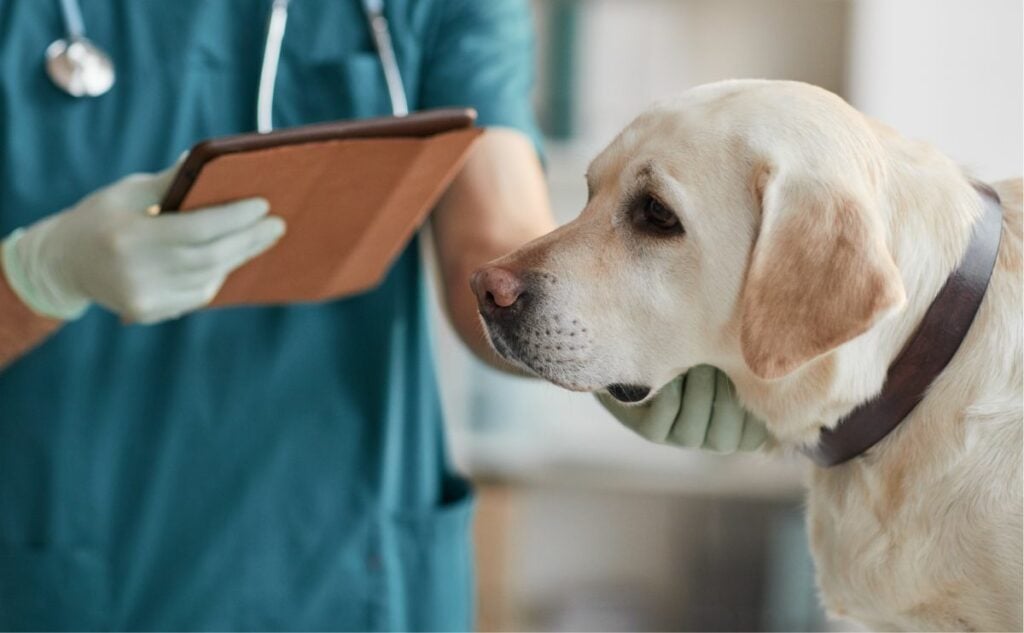
Possible Causes To Ask Your Vet About
Shedding alone isn’t always the issue. It’s the pattern, intensity, and what’s going on with their skin or overall health that matters.
- Allergies: Food, dust, grass, or even laundry detergent can trigger reactions.
- Parasites: Fleas, ticks, or mites can cause severe itching and patchy fur loss.
- Skin infections: Bacterial or fungal issues often appear as hot spots or scaly patches.
- Thyroid or hormonal problems: These can mess with your Lab’s metabolism and coat.
- Nutrient deficiencies: Low-quality diets lacking omega fatty acids or protein can worsen shedding.
What To Do
Monitor any sudden changes in your dog’s skin or behavior. Take photos, jot down when it started, and call your vet. Catching these issues early saves your sanity and can keep your Lab healthier and happier in the long term.
Can You Shave A Lab?
I get it, after dealing with tumbleweeds of fur, shaving your Lab might sound like the ultimate shortcut. Less fur, less vacuuming… right?
Wrong. Please put down the clippers.
Labradors have a double coat for a reason. It keeps them warm in the winter and cool in the summer by regulating body temperature.
Shaving that coat disrupts their natural insulation, opens the door to sunburn and skin irritation, and can actually make shedding worse as the coat grows back unevenly.
And no, it doesn’t stop the hair from coming. It just makes it shorter, harder to clean, and somehow even more annoying.
You can’t shave your way out of Lab shedding, only into a worse coat and a guilty conscience. Groom smart, don’t shave desperate.
Frequently Asked Questions About Labrador Shedding
Got more questions about Labrador shedding? You’re not alone. Here are some of the most common ones we get. But if we missed yours, drop it in the comments, and we’ll do our best to answer!
Why Do Labs Shed So Much?
Labradors shed a lot because they have a double coat, a dense undercoat for insulation, and a water-resistant topcoat. This helps them adapt to all climates but also means they shed more than single-coated breeds.
When Do Labs Shed The Most?
The heaviest shedding happens during molting seasons, spring and fall when Labs “blow” their coats to adjust to temperature changes. But mild shedding happens all year, so grooming is always part of the deal.
Why Do Labs Shed In The Winter?
Just before winter, Labs start dropping their summer coat to grow into thicker winter ones, leading to an uptick in the fur around the house. You’ll see the same pattern before spring, too.
Do Labs Shed In The Spring, Summer, Or Fall?
Yes, to all three, but spring and fall are the worst. Summer shedding tends to be lighter, and winter shedding happens mostly in early cold months. Translation: fur happens all year.
When Do Labs Shed Their Puppy Coat?
Labs start shedding their soft puppy coat around 4 to 5 months old. This is when their adult double coat grows in, and your vacuum becomes part of the family. Check out our Labrador puppy growth chart guide for more puppy milestones.
How Can I Reduce Labrador Shedding In The House?
Regular brushing, monthly baths, a high-quality diet, and tools like robot vacuums or air purifiers can make a huge difference. It’s about managing, not eliminating, the fluff.
What Type Of Brush Is Best For A Labrador?
Use a de-shedding tool during heavy shedding seasons and a slicker brush for regular upkeep. Each tackles a different layer of the coat.
How Often Should I Bathe My Labrador?
Once a month or every two months is usually enough. Bathing too often can dry out their skin and lead to even more shedding. Use a gentle, dog-safe shampoo, preferably one with moisturizing ingredients.
Do Supplements Help With Shedding?
Yes, omega-3 fatty acid supplements, like fish oil, support healthy skin and coat. They can help reduce shedding over time and also improve joint, brain, and heart health.
Is My Lab Shedding Too Much?
It may be more than normal shedding if you notice bald spots, excessive itching, or red, irritated skin. Allergies, parasites, or health issues could be at play, so check with your vet.
What’s Next For You & Your Lab?
Now that you’ve got a handle on the question “Do Labs shed?” and their fur, it’s time to make the rest of your Labrador life even better.
When it’s time to crash, we’ve reviewed the best dog beds for Labradors, from orthopedic support to chew-proof comfort. If walks feel more like a tug-of-war, check out our top picks for the best harnesses for Labs, including no-pull options that actually make a difference.
And finally, to protect your pup and your budget, we’ve broken down the best pet insurance plans for Labs, so you’re covered for unexpected medical needs, from common Labrador health issues to accidents.
We’d love to hear from you. So, please drop your Labrador shedding stories, tips, or survival hacks in the comments and help fellow Lab owners feel a little less alone in the fur storm!
